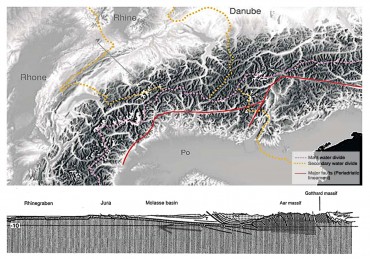
The driving force of folding the Jura
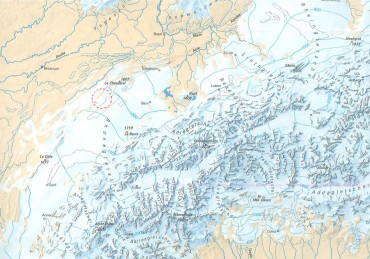
Last galcier period 18000 year ago
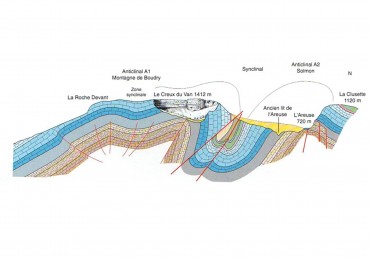
Geological section through the Creux du Van
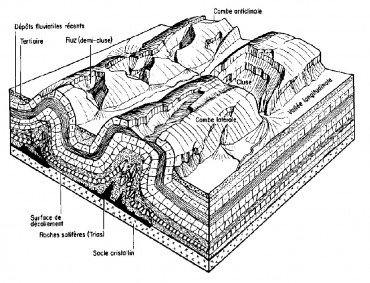
The specific box-folds in the Jura (Kofferfalten) with steep limbs and flat hinges.
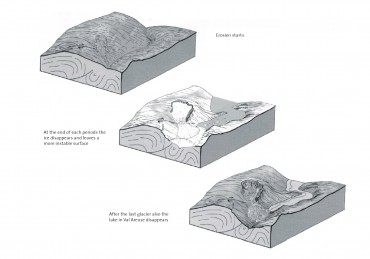
Formation of the Creux du Van
16.7.2014 – Issue 12 - Earth – Winkler Wilfried – Interviews
JURA MOUNTAINS: ASPECTS OF ORIGIN, TECTONICS AND MORPHOLOGY
by Wilfried Winkler
Could you shortly explain the formation oft he Jura mountains and ist relationship with the Alps?
The rocks which we find in the Jura mountains formed at the northern margin of the Alpine see. This northern margin occupied a shallow marine environment where mostly limestones were diposited. Most important is the existence of evaporitic rocks at the base which were important as a lubricant during the deformation of the Jura mountains.
The sediments are carachterized by the ordination of limestones, marlstones and shales which were diposited in different conditions in the shallow see. The conditions (climate, water depth) changed during the time of deposition, which occupied a period of time of 120 million years.
What is the explanation of the layered condition of the Jura and the Creux-du-Van ?
The morphology of the Jura firstly was controled and made by the folding, which ist he typical folding in box folds style. The sediments which were diposited earlier on the flat bottom were folded and shortened in about a 20%. So this early mountain chain was formed by the folding and compression folding. This of course controled later the development oft he river systems and the drainage.
Secondly the morphology is a result of the different resistivity to erosion of the different rocks. In our case, in the Jura, limestones are more resistant to erosion than marlstones and shales. So erosion will affect more to the first sediments which are more vulnerable to it.
How are the physical conditions and morpholgy of the limestone?
Limestone in the Jura mountains has been quarried since historic times. A famous example is the pierre jaune de Neuchatel which has been used for the construction of most of the churches and administration buildings in the cantons around the area.
Download article as PDF

